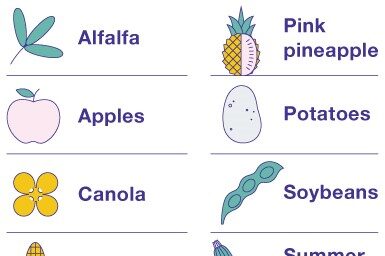I hear so many differing opinions on the use and safety of GMOs in food. What are the facts?
The short answer: The facts and reasons for GMO usage can be as diverse as the GMOs themselves
The explanation:
First, we’d like to assure you that scientific organizations and regulatory agencies around the world have deemed currently available GMO foods as safe for consumption. This includes the World Health Organization (WHO), the National Academy of Sciences (NAS), the American Medical Association (AMA), the European Food Safety Authority (EFSA), the U.S. Food & Drug Administration (FDA), and Health Canada, which conduct thorough research and safety assessments on GMOs before approving their use.
Now a little background. Crop modification, such as through cross-, selective, and mutation breeding, is as old as human farming itself. With the evolution of technology, scientists can now use genetic engineering (or bioengineering) to take modifications even further, enabling such benefits as insect resistance or drought tolerance, and even seedless watermelons. Such modifications are done now, as they have been since farming began, primarily to provide for higher crop yields, less crop loss, longer storage life, better appearance, and/or better nutrition.
Today’s bioengineering is defined as “foods that contain detectable genetic material that has been modified through certain lab techniques and cannot be created through conventional breeding or found in nature.” In the U.S., the foods (which are commonly referred to as GMOs – Genetically Modified Organisms) are regulated by the FDA or USDA, and must comply with labeling requirements of the National Bioengineered Food Disclosure Standard, which became mandatory in 2022.
Additionally, FDA requires that foods from GMO plants must meet the same requirements as those derived from traditionally bred plants, making them as healthful and safe to eat as their non-GMO counterparts. It is likely, in fact, that you have eaten GMO foods without realizing it, as more than 90% of all soybeans, corn, and cotton are GMO, with most used to make ingredients for other food products.
Despite the proven safety and benefits of GMOs, there are a number of countries (including many in the EU) and organizations that continue to oppose their use, with the EU countries banning their cultivation, however the EU does continue to import certain GMO crops, including soy due to its need for livestock feed. For more factual information on GMOs, visit FDA’s Feed Your Mind: Agriculture Biotechnology webpage and view TAG’s Insights articles related to GMO facts and regulations.





